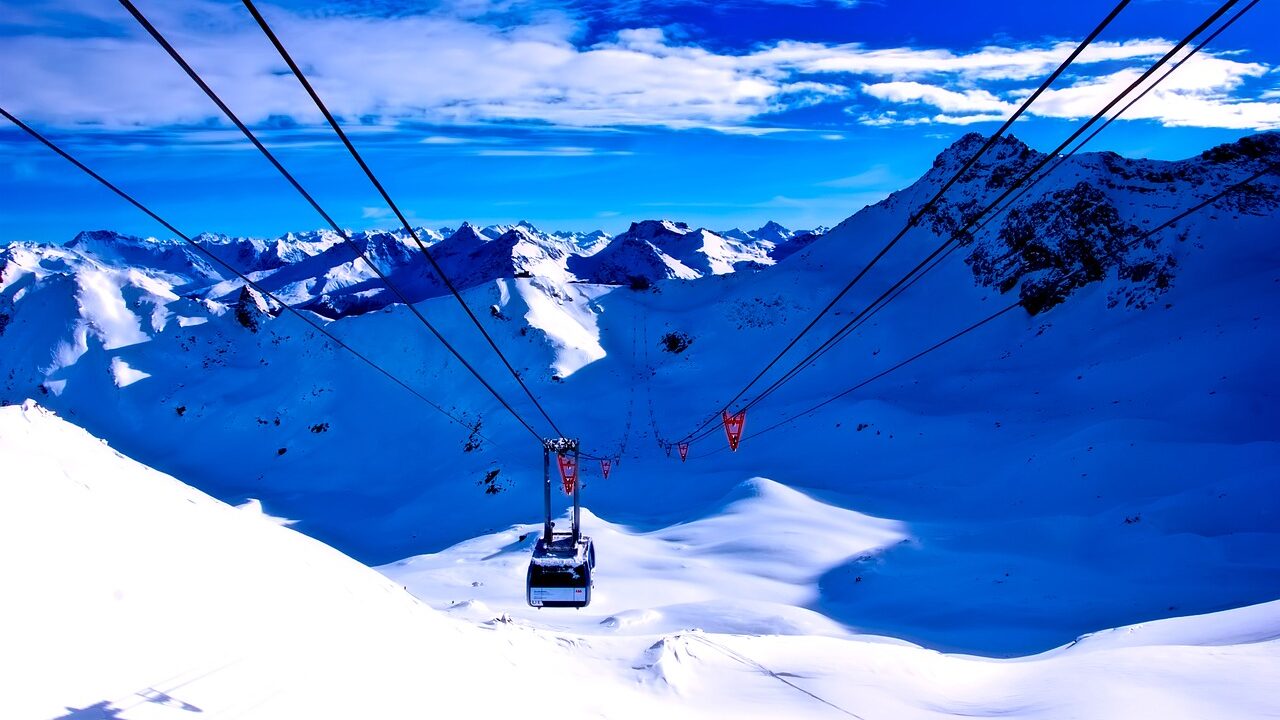Alpine skiing is a type of skiing, the essence of which consists of skiing down the mountains on a track marked with special flags and gates. Downhill skiing includes five sports disciplines (types): slalom, giant slalom, supergiant slalom (supergiant), downhill skiing, and ski combination.
Slalom is a downhill skiing on a track that is 450 to 500 m long. The slalom track is marked with 3.5 to 4 m wide gates and the distance between them is 0.7 to 15 m. Height difference between the start and finish line is 60-150 meters. During the slalom, the athlete must pass through all gates, failure to do so will result in disqualification.
Giant slalom differs from the usual slalom in the length of the course (1 to 1.5 km) and the width of the gate (4 to 8 meters). During the giant slalom athletes manage to accelerate up to 80 km/h.
Supergiant is an even more difficult discipline, this is due to the greater length of the track and large drops in altitude.
The essence of the downhill comes down to overcoming a particular track in the minimum time.
Downhill combined (alpine combined or biathlon) is a type of alpine skiing where the winner is determined by the results in several disciplines.
The International Ski Federation (FIS) is an international organization that oversees all forms of skiing, including alpine skiing.
History of the origin of alpine skiing
Skiing emerged in Scandinavia in the mid-18th century. At that time, skis were the only means of transportation for peasants who lived in the mountains. The skis themselves looked a bit different than today: they were shorter, and instead of the usual two ski poles was one elongated with an extended end. The oldest preserved skis are in a museum in Oslo (length 110 cm, width 20 cm).
The first ski competitions were held in Norway in 1843, the program included downhill, ski jumping and speed running on the plain.
In 1896, the Austrian mountaineer and skier Matthias Zdarsky made a non-stop downhill with turns. The “stumpy” technique is entirely his invention. In 1905, there was even a competition for skiers in the Alps in which they had to make the maximum number of turns on a given stretch.
In 1911 the first downhill competitions were held.
In 1936, slalom and downhill made their Olympic debut. Since 1988, the Alpine Skiing Olympics program includes 5 disciplines: Slalom, Giant Slalom, Super Giant Slalom (Super-G), Downhill, and Ski Jumping.
Equipment and equipment for skiing
Alpine skis are heavier, shorter, and wider than regular skis. They are usually made of composite materials and tailored to the specific athlete. The main criteria for choosing an alpine ski are: stiffness, length, geometry and turning radius.
Equally important element of equipment are ski boots. Ski boots have a large number of adjustments for an optimal and comfortable “fit” of the boot on the foot. Modern ski boots consist of an inner and outer boot. Worn on a special ski sock (moderately thick and long).
Bindings for the boots consist of a front head and heel, which are installed directly on the ski or on a platform that is attached to it. Sometimes there are ski-platform-binding systems that make it easier to install the bindings and also allow the ski to flex under a rigid boot sole.
Ski poles are usually made of aluminum, composite materials or carbon fiber. A ski pole consists of four main parts: the handle, the tip, the ring, and the shaft. Curved poles are used for downhill or giant slalom.
Ski helmet provides not only protection from head injuries in case of a fall, but also provides comfortable skiing (ventilation of the head, protection from the cold and snow). In addition to the helmet are protective ski goggles.
Skiing clothes should protect the skier from wind and moisture, but keep warmth well and have good aerodynamic characteristics. Ski equipment should be comfortable and loose. As a rule, a set of clothes consists of a jacket and pants. Do not do without numerous accessories for skiing, these include a variety of backpacks and pouches.
Competitions in alpine skiing
The Olympic Games are the most prestigious alpine skiing competitions, held once every four years.
World Cup Alpine Skiing – an annual cycle of Alpine skiing competitions held under the auspices of the FIS.
World Alpine Skiing Championships – competitions between national teams that are members of the International Ski Federation.
